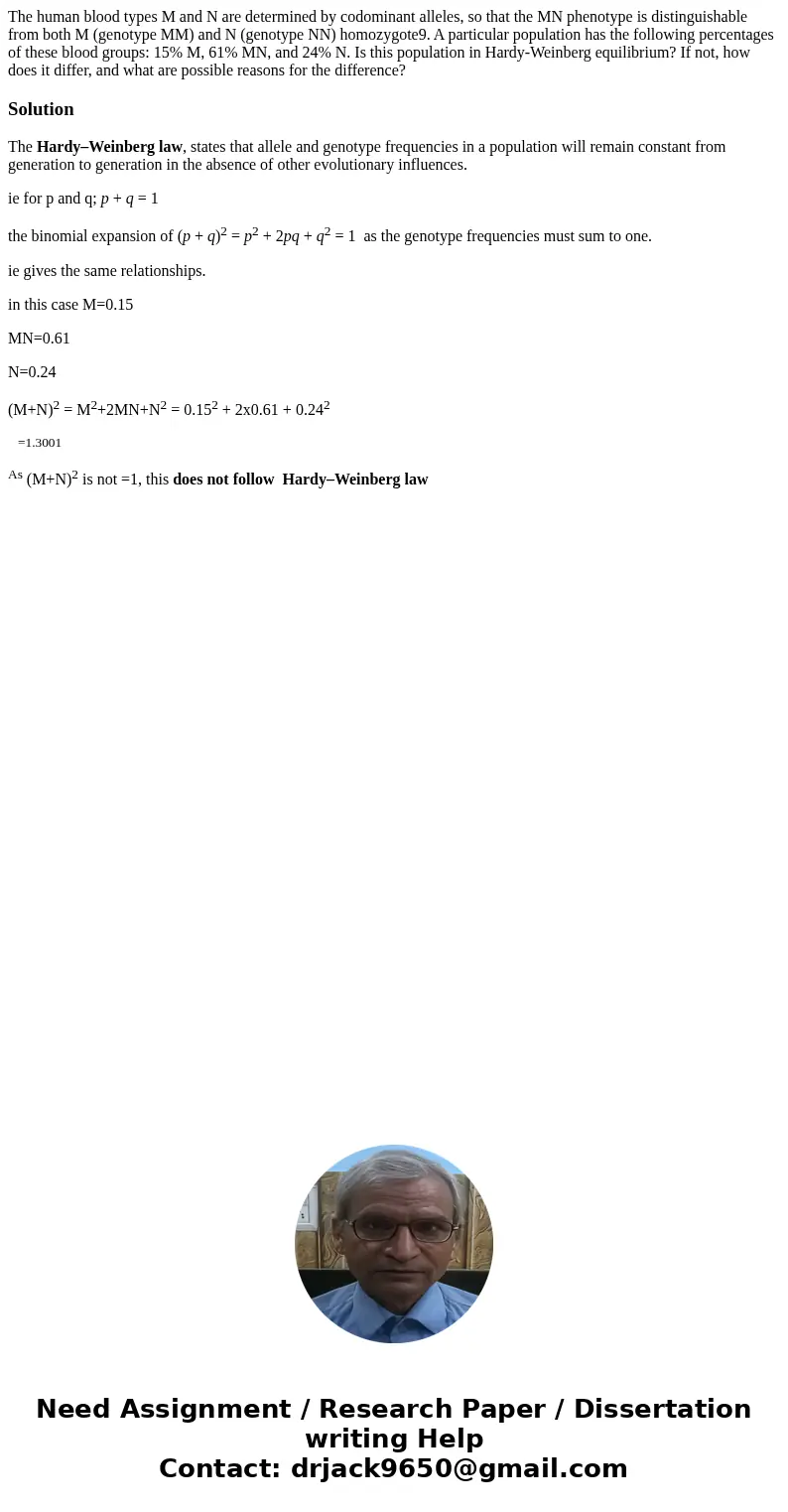The human blood types M and N are determined by codominant a
The human blood types M and N are determined by codominant alleles, so that the MN phenotype is distinguishable from both M (genotype MM) and N (genotype NN) homozygote9. A particular population has the following percentages of these blood groups: 15% M, 61% MN, and 24% N. Is this population in Hardy-Weinberg equilibrium? If not, how does it differ, and what are possible reasons for the difference?
Solution
The Hardy–Weinberg law, states that allele and genotype frequencies in a population will remain constant from generation to generation in the absence of other evolutionary influences.
ie for p and q; p + q = 1
the binomial expansion of (p + q)2 = p2 + 2pq + q2 = 1 as the genotype frequencies must sum to one.
ie gives the same relationships.
in this case M=0.15
MN=0.61
N=0.24
(M+N)2 = M2+2MN+N2 = 0.152 + 2x0.61 + 0.242
=1.3001
As (M+N)2 is not =1, this does not follow Hardy–Weinberg law

 Homework Sourse
Homework Sourse